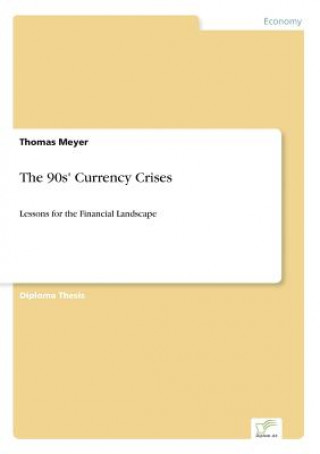
Kód: 05297998
90s' Currency Crises
Autor Thomas Meyer
Inhaltsangabe:Abstract: When on June 2nd 1997 Thailand devalued its currency, the stage was set was the most severe and virulent currency crisis of that decade. The sudden reversal of capital flows depleted economic wealth and so ... celý popis
- Jazyk:
 Angličtina
Angličtina - Vazba: Brožovaná
- Počet stran: 92
Nakladatelství: Diplom.de, 2000
- Více informací o knize

Mohlo by se vám také líbit
-

Selected Topics In Structronics & Mechatronic Systems
5639 Kč -

Richard Mosse
2354 Kč -

Why Is Sex Fun?
276 Kč -

Pupil Friendly IEPs and Target Sheets
4006 Kč
Darujte tuto knihu ještě dnes
- Objednejte knihu a zvolte Zaslat jako dárek.
- Obratem obdržíte darovací poukaz na knihu, který můžete ihned předat obdarovanému.
- Knihu zašleme na adresu obdarovaného, o nic se nestaráte.
Více informací o knize 90s' Currency Crises
Nákupem získáte 224 bodů
 Anotace knihy
Anotace knihy
Inhaltsangabe:Abstract: When on June 2nd 1997 Thailand devalued its currency, the stage was set was the most severe and virulent currency crisis of that decade. The sudden reversal of capital flows depleted economic wealth and social cohesion in many East Asian countries, hitherto perveived to belong to the Asian Miracle. Shockwaves of the crisis were felt in most emerging markets, even those outside the region, and reached mature markets when, for instance, the hedge fund Long-Term Capital Management nearly collapsed. In face of these enormous costs, this paper analyses the possibilities and boundaries of attempts to either reduce the likeliness of respective financial shocks or, when unavoidable, lower the costs of managing these crises. On the ground of the state-of-the-art models of currency crises it is examined which domestic or international factors contributed most to the observed outcome. The guiding question is if either moral hazard considerations, in the form of governmental guarantees and alike, or approaches of multiple equilibria are more suited to serve as an explanation. Moreover, this paper illuminates the significance of the original sin hypothesis which states that emerging markets are constrained when trying to borrow abroad in domestic currency or, even when trying at home, to borrow long-term. Although it is acknowledged that all these factors are valid simultaniously, superior importance in the following parts is given on the multiple equilibria approach. The main part of the paper discusses the most influencial reform proposals of academics and institutions such as the IMF or the Group of 22. Approaches for a new financial architecture are divided into issues of the exchange-rate regime, public and private liquidity, and the institutional framework. These recommandations include questions of dollarization; an international lender of last resort; insurance agencies and credit facilities; capital controls; improved regulation and transparency; as well as the addidition of collective action clauses and alike to international bond contracts. They are assessed according to the criteria developed before, especially with regard to the approaches of moral hazard, multiple equilibria, and original sin. Taking into account that any grand scheme is rather unlikely to be realized on short notice, the conclusions concentrate on moderest reform proposals which can be pursued by emerging countries indiviually or with the assistance of international institutions. One of the findings is, that additional liquidity in the event of a crisis, provided by whatever means, is a suitable tool to avoid over-reacting financial markets but must be constrained by conditionality in order to discourage moral-hazard behavior. Moreover, collective action clauses and restrictions on capital inflows can be used as a second line of defense to prevent the buildup of an unsustainable bias towards short-term financing. Further institutional improvements contribute to defuse the original-sin problem but have its benefits developed only over a longer time horizon. Inhaltsverzeichnis:Table of Contents: 1.Introduction1 2.Understanding Currency Crises 2.1The Path from the Canonical Model to Moral Hazard9 2.2Multiple-Equilibria and Financial Panic19 3.At the Core of the Problem: The Exchange-Rate Regime 3.1Currency Pegs versus Floating Exchange Rates23 3.2Dollarization as an Alternative27 4.At the Center of the Problem: Liquidity 4.1The Need for Liquidity or an International Lender of Last Resort34 4.2Insurance and Credit Facilities against Systematic Risk38 4.3Capital Controls 4.3.1Controls on Capital Outflow42 4.3.2Taxes on Capital Inflows45 5.At the Heart of the Problem: The Institutional Framework 5.1International Bankruptcy Standards49 5.2Regulation and Transparency51 5.3Collective-Action Cl...
 Parametry knihy
Parametry knihy
Zařazení knihy Knihy v angličtině Economics, finance, business & management Economics
2243 Kč
- Plný název: 90s' Currency Crises
- Autor: Thomas Meyer
- Jazyk:
 Angličtina
Angličtina - Vazba: Brožovaná
- Počet stran: 92
- EAN: 9783838624303
- ISBN: 3838624300
- ID: 05297998
- Nakladatelství: Diplom.de
- Hmotnost: 132 g
- Rozměry: 210 × 148 × 6 mm
- Datum vydání: 14. June 2000
Oblíbené z jiného soudku
-
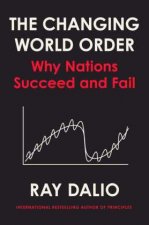
Principles for Dealing with the Changing World Order
575 Kč -

Team Topologies
543 Kč -

Freakonomics
225 Kč -

Misbehaving - The Making of Behavioral Economics
298 Kč -

Indispensable Milton Friedman
692 Kč -

Little Book of Economics
276 Kč -

Why Nations Fail
205 Kč -

Pyramid Principle, The
1163 Kč -

Essential Mathematics for Economic Analysis
1840 Kč -
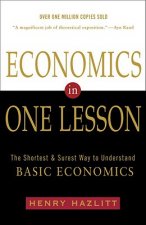
Economics In One Lesson
410 Kč -

Predictably Irrational
410 Kč -

Price of Inequality
298 Kč -

(Mis)Behaviour of Markets
356 Kč -

Debt, 10th Anniversary Edition
703 Kč -

A-Level Economics: Year 1 & 2 Complete Revision & Practice (with Online Edition)
699 Kč -

The Invisible Hand
185 Kč -

Liar's Poker
304 Kč -

Rational Optimist
307 Kč -

Irrational Exuberance
486 Kč -

Art of Statistics
323 Kč -

Scrum - A Pocket Guide - 3rd edition
562 Kč -

Hypomanic Edge
505 Kč -

How I Made One Million Dollars Last Year Trading Commodities
1009 Kč -
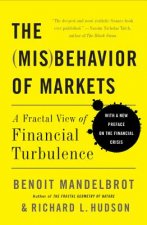
Misbehavior of Markets
604 Kč -

Econometric Analysis, Global Edition
2158 Kč -

Cartoon Introduction to Economics
507 Kč -

Economics: The User's Guide
378 Kč -

Rise of Carry: The Dangerous Consequences of Volatility Suppression and the New Financial Order of Decaying Growth and Recurring Crisis
677 Kč -

Myth of Capitalism - Monopolies and the Death of Competition
576 Kč -

How Rich Countries Got Rich and Why Poor Countries Stay Poor
410 Kč -

Business Etiquette in Brief
311 Kč -

Discovery, Capitalism & Distributive Justice
552 Kč -

Economic Point of View
722 Kč -

Are the Rich Necessary?
359 Kč -

Intermediate Microeconomics and Its Application
2616 Kč -

Driving Digital Transformation
543 Kč -

Start-Up Nation
268 Kč -

Economic Facts and Fallacies
423 Kč -

Decision Book
415 Kč -
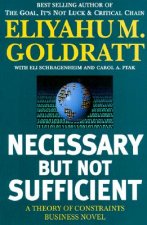
Necessary but Not Sufficient
419 Kč -

Freakonomics
169 Kč -

Economics Book
564 Kč -

Leading at a Higher Level
799 Kč -

Principles of Economics
392 Kč -

Macroeconomics For Dummies
627 Kč -

45 Second Presentation That Will Change Your Life
243 Kč -

Economics of the Public Sector
1965 Kč -

Factfulness
258 Kč -

Currency Wars
433 Kč
Osobní odběr Praha, Brno a 12903 dalších
Copyright ©2008-24 nejlevnejsi-knihy.cz Všechna práva vyhrazenaSoukromíCookies



 Vrácení do měsíce
Vrácení do měsíce 571 999 099 (8-15.30h)
571 999 099 (8-15.30h)